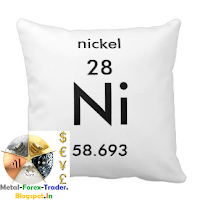LME nickel overnight closed up 1.05% at $11,580 per ton as other base metals largely finished lower against a strong dollar. Will this continue into the last trading day of the week?
“Weak demand and a strong dollar will cap gains in the nickel market, and short bets are advised to be built, with stop-loss order at 84,000 yuan for September delivery nickel on the SHFE,” an analyst told SMM in an interview.
Another analyst from Chaos Ternary Futures expected wide trade in nickel market, with prices between 81,000-89,000 yuan per ton.
In other news, LME nickel inventories fell to 452, 850 as of Jul. 16, down 630 tons from a day earlier. The same day, Jinchuan Group announced to cut its ex-works prices after raising for second consecutive days.
“Weak demand and a strong dollar will cap gains in the nickel market, and short bets are advised to be built, with stop-loss order at 84,000 yuan for September delivery nickel on the SHFE,” an analyst told SMM in an interview.
Another analyst from Chaos Ternary Futures expected wide trade in nickel market, with prices between 81,000-89,000 yuan per ton.
In other news, LME nickel inventories fell to 452, 850 as of Jul. 16, down 630 tons from a day earlier. The same day, Jinchuan Group announced to cut its ex-works prices after raising for second consecutive days.






